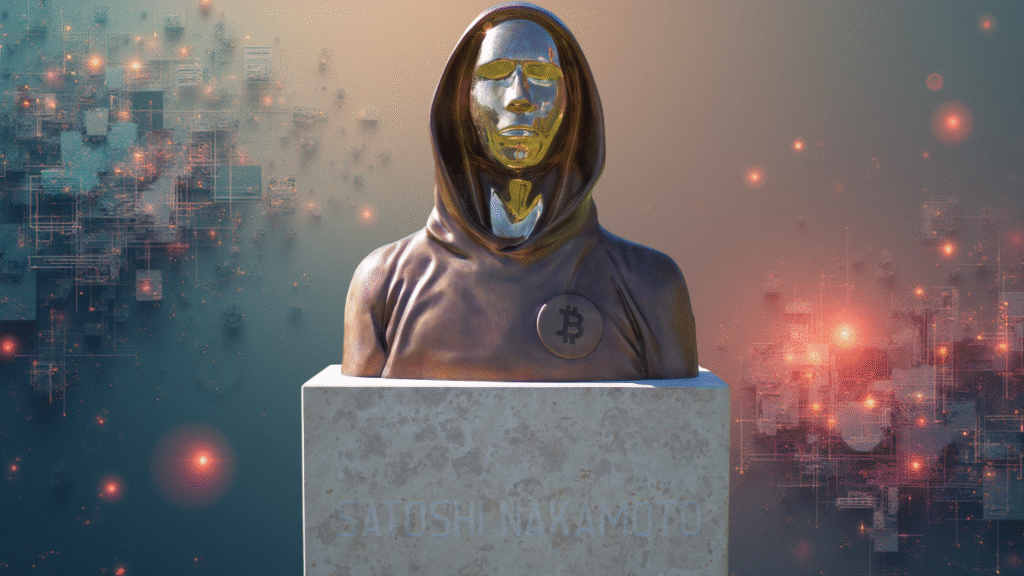
When Tucker Carlson told millions of viewers that “the CIA invented Bitcoin,” he wasn’t just peddling another internet rumor, he was tapping into something older and deeper. In America, myths about power have always found a way to digitize themselves. The mystery of Satoshi Nakamoto, once a cryptographic puzzle for cypherpunks, has become something else entirely: a mirror for a nation that no longer trusts the people running its machines.
In Brief
By 2024, the mystery of Nakamoto had evolved far beyond cryptography. It had become a symbol, one that fused together the anxieties of finance, privacy and state power.
Carlson’s claim tapped directly into that cultural vein. To his audience, the notion that the CIA could be behind Bitcoin didn’t require proof; it felt plausible in a world where everything from pandemics to elections is subject to conspiratorial reinterpretation.
Political scientists describe this as a post-trust environment, a landscape where institutional credibility has eroded, and where the line between skepticism and cynicism blurs. Media scholars note that when traditional sources of authority lose legitimacy, narratives and myths often emerge to fill the gap in public understanding.
In that sense, the mystery of Satoshi functions like modern folklore: a blank canvas onto which every generation paints its fears about control, anonymity, and freedom. The CIA theory, like earlier claims about shadowy global elites or rogue scientists, is less about Bitcoin itself than about what Bitcoin represents, a challenge to authority.
Related: Casascius Coins 2025: $180M Bitcoin Suddenly Moves
The myth of Nakamoto now lives at the crossroads of code and belief. Developers still pore over the original white paper like scripture, tracing every phrase for hidden meaning. Academics study Nakamoto’s writing style, syntax, and timestamps, hoping to triangulate a region, a language, or a mindset.
Several candidates have been publicly named. In 2014, Newsweek identified Dorian Nakamoto, a Japanese American physicist living in California, as Bitcoin’s creator; a claim he denied. Others pointed to Hal Finney, an early cryptographer who received the first Bitcoin transaction, or Nick Szabo, the designer of a precursor called “bit gold.” Both denied involvement; Mr. Finney died later that year.
The loudest claimant, Australian computer scientist Craig Wright, spent years insisting he was Satoshi until a British court ruled in 2024 that there was “overwhelming” evidence he was not.
Each name added another layer to the myth. Each denial deepened the fascination.
Related: Shiba Inu Delivers on Its Promise With New Bounty Contract

Carlson’s remarks came at a moment when Bitcoin was reentering mainstream political discourse. Lawmakers were debating stablecoin regulations, and institutional investors were returning to crypto markets. Against that backdrop, his suggestion that the CIA might have created Bitcoin reframed the debate, not as a financial story, but as one about power.
For his supporters, the idea resonated with broader narratives of government manipulation. For his critics, it illustrated how conspiracy has become entertainment: a performance of skepticism without accountability.
Either way, the claim ensured one thing, that the myth of Satoshi Nakamoto would remain alive, endlessly recycled to fit the story America wants to tell about itself.
A new wave of documentaries and podcasts, including the forthcoming Finding Satoshi, continues to search for the person behind the pseudonym. Linguists, intelligence experts, and early developers dissect archived emails and code commits, hunting for the fingerprint of an author who never wanted to be found.
None have succeeded. But the search itself has become part of Bitcoin’s identity: proof that even in an age defined by data, some secrets endure.
The CIA theory is unlikely to be the last, nor Tucker Carlson the final voice to repeat it. Each generation will return to the Satoshi mystery, reshaping it to fit its moment, an algorithm of human curiosity that runs as reliably as Bitcoin’s own code.
And so the question lingers, through every rumor and revelation:
Why do we desire to know the man behind the legend?

Yona brings a decade of experience covering gaming, tech, and blockchain news. As one of the few women in crypto journalism, her mission is to demystify complex technical subjects for a wider audience. Her work blends professional insight with engaging narratives, aiming to educate and entertain.